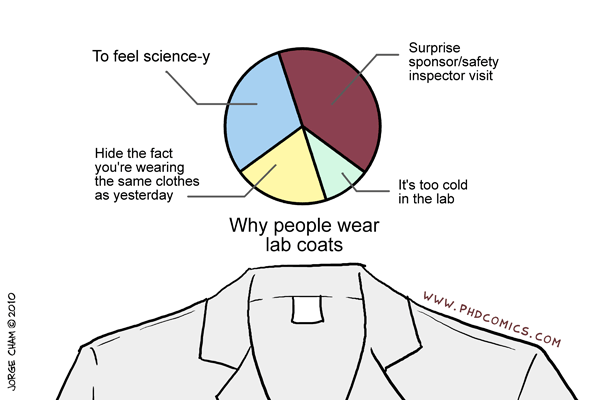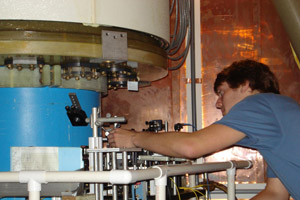
Today we're introducing you to New Voice
Jamie Vernon, Postdoctoral Research Fellow with Dr. Lambowitz at The University of Texas at Austin.
NV: What do you do?
Jamie: I'm a Postdoctoral Fellow, NIH funded, and I work in a lab with Dr. Alan Lambowitz, a biochemist and microbiologist who studies mobile elements. Our lab is working on developing a gene targeting technology that could potentially be used for gene therapy and genetic engineering. This technology is based on something many people consider to be "junk DNA." These days it's becoming more and more evident that there is no such thing as "junk DNA." If it's conserved in our genomes, it probably serves a purpose.
Specifically, we study group II introns from bacteria and eukaryotic organelles. Our lab has determined that these mobile elements can be re-targeted to controllably insert into any DNA sequence. We call these re-targeted introns "targetrons" and they work very well in bacteria for creating gene knock-outs. My job is to make them target genes in eukaryotic cells, including human cells.
NV: How did you get started in outreach/advocacy?
Jamie: I think the Bush administration was a trigger. The policies related to stem cell research motivated me to act. I felt that the Bush administration's stem cell policies were not based on the best science. What was being touted was that we had all these existing stem cell lines, "why couldn't we do the research on those and get the answers we need?" But there were problems with those lines. We need a much broader collection of lines in order to deal with different diseases and different genomic backgrounds. There weren't adequate cell lines to address all these concerns. That's what sucked me in.
Now, climate change has become one area that needs to be addressed,the next calamity in science policy. Actually, there are countless science-related policy issues such as geoengineering, genomic privacy,forensic science and, of course the big one, alternative energy, that need to be carefully deliberated before we make the wrong policy decisions.
NV: What motivates you to do advocacy?
Jamie: My main motivation is that I think that science has so much to offer but it's being limited by the current policies. I truly believe that communicating science and gaining partnerships out in the public will have a positive effect on how much science is getting done.
The climate change bill is a huge issue for me. There's little room for compromise. If we don't act, the consequences down the road could be much greater than any financial investment we have to make today. You can't lose by investing in technologies that improve the environment. If the facts hold true, and I assume they will, the ramifications are dire for everyone.
NV: What limits your ability to do advocacy?
Jamie: I would say that I'm constrained by the same things as young professors. You have to produce to be considered effective. I have no incentive to do advocacy other my personal beliefs and desire to make science commonplace in the public discourse. I'm also limited by the fact that by the time I had graduated I had a family, a wife and a daughter, and that requires personal time. Mainly, I need to have a high level of productivity in order to compete and build my own research career.
There's little out there to support young scientists who wish to do outreach. For these reasons, I'm torn on which direction I want to go full-time. Science advocacy is very rewarding, but I'm a scientist at heart. It's difficult to be successful at both and it's almost an impossible decision to choose one over the other.
NV: Do you think outreach and advocacy should be required of scientists?
Jamie: No, I don't. I think there are enough scientists who care about outreach and have the communication skills to do it; rather, it should be incentivized in some way. If you force them, especially if they don't have the proper communication skills and don't want to be out there, they could make mistakes and say some stupid stuff. You need people who understand the sensitivities of the community and understand the arguments within the community. You need the public to feel that there position is being considered and appreciated when science policy decisions are being made.
Want to learn more about the issues Jamie mentioned above? Check out his blog!
This is part of the ongoing Profiling New Voices series.
 So as fellows depart from Research!America it has become a tradition for them to write a sign off post. After doing a google image search using phrases like "goodbye" and "adios", I put in what I thought was how you say goodbye in French - Von Boyage. To my surprise, this phrase not only doesn't exist, but "bon voyage", the real phrase, doesn't mean "goodbye". Does this explain why Parisian's have always been so rude to me whenever I have visited their beautiful city? (My strategy to communicate with foreigners by speaking English loudly and slowly works pretty well in other countries.)
So as fellows depart from Research!America it has become a tradition for them to write a sign off post. After doing a google image search using phrases like "goodbye" and "adios", I put in what I thought was how you say goodbye in French - Von Boyage. To my surprise, this phrase not only doesn't exist, but "bon voyage", the real phrase, doesn't mean "goodbye". Does this explain why Parisian's have always been so rude to me whenever I have visited their beautiful city? (My strategy to communicate with foreigners by speaking English loudly and slowly works pretty well in other countries.)














_Entry_1.jpg)
















